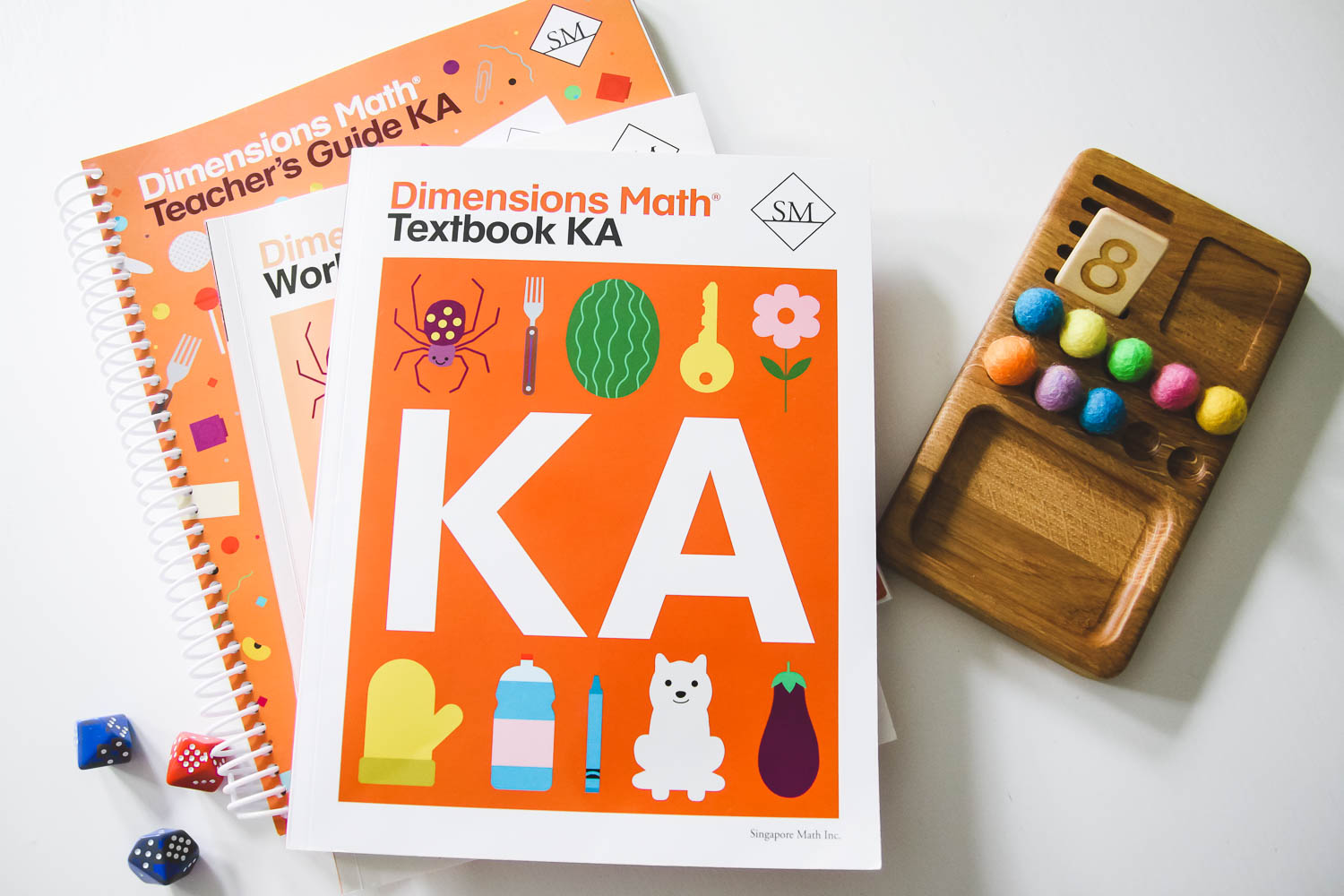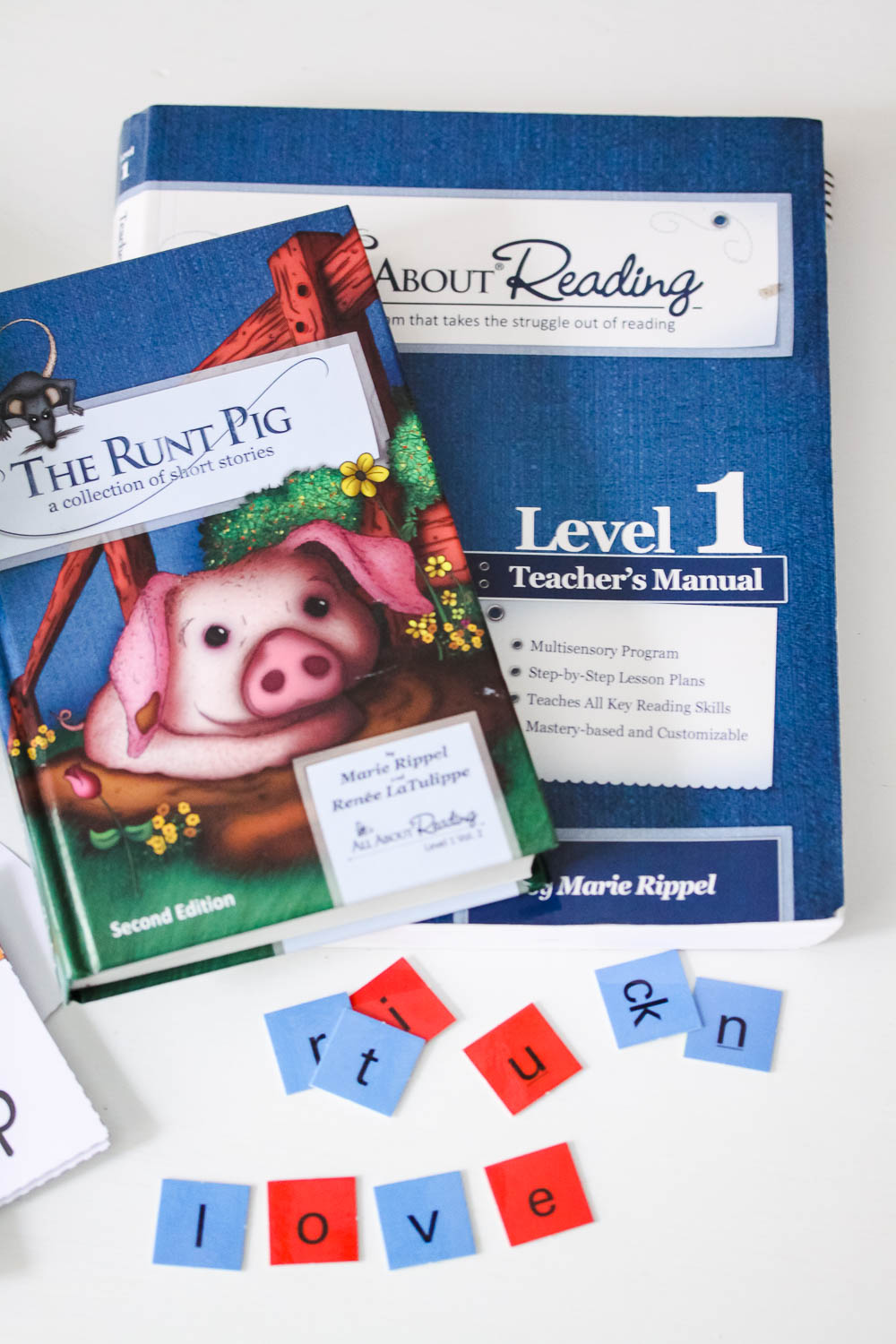let's be social!
It’s both a blessing and a curse that as homeschooling has increased in popularity, the homeschool curriculum market has exploded. There are so. Many. Curriculum. Choices. Unless you already
have your heart set on one in particular, choosing homeschool curriculum for your family can be an incredibly overwhelming process.
Over the last few years I’ve developed a system for evaluating whether a curriculum might be the right fit for us. And I figured it out the hard way after two of our math choices in a row didn’t work out. It was expensive and frustrating, and I felt like it set us back in math.
So how do you choose the right homeschool curriculum for your family?
Well, I’ll walk you through my step-by-step process of choosing homeschool curriculum in hopes that it will help you as you prepare to make your selections for next year.

FIGURE OUT WHAT YOU WANT IN A CURRICULUM: 10 QUESTIONS TO ASK YOURSELF BEFORE CHOOSING HOMESCHOOL CURRICULUM
Question #1: Does it matter if it’s a Christian-based or secular curriculum?
As someone who’s passionate about Jesus and sharing the Gospel with others, I had to really dig in and decide how important this one was to me. I came from teaching in public schools where everything is secular, and I kind of assumed that in our homeschool, everything would be faith-based.
Turns out, I was wrong.
We read the Bible, practice reciting and memorizing Scripture, and sing hymns each day. We also study art and classical composers, go out into nature and study God’s creation, and discuss history in light of the Fall. And we definitely read books and fairy tales that point to the goodness of God and His ultimate defeat over evil.
Our days are filled with Truth and grace. So what I’ve found is that I don’t need a curriculum to be explicitly faith-based in order to use it and love it. Something might never mention the name of Christ, but can still be beautiful, true, and lovely, therefore pointing our hearts to the Creator.
But your answer might be different.
Maybe it’s important to you that your curriculum is faith-based. Or maybe because of government regulations, you aren’t allowed to purchase explicitly faith-based materials. Regardless of your answer, this is one question I think it’s helpful to answer before you even begin the process of choosing homeschool curriculum.
Question #2: What is my budget for our homeschool curriculum?
I do wish that budget WAS never an issue. But alas, as a middle-class, single-income family, we do have to sit down and figure out an annual homeschooling budget.
Thankfully, we have some margin in our overall budget (thanks to still living in our small house), which means I’m usually able to spend the money to buy what we need. And because Mr. Six is our oldest, we typically buy curriculum new with the anticipation that after using it with 3 kids, we’ll get our money’s worth.
It’s helpful to browse the different curriculum companies out there and get an idea of what their prices look like, though. Then head to the drawing board to figure up a realistic budget. Once you have those numbers, you have some guardrails to help you narrow down your choices.
One thing I’ll add, though, is if you’re on a tight budget, there are several really good homeschool curriculum buy/sell groups on Facebook. I scored a brand new, still-in-the-vacuum-sealed-wrap Math-U-See curriculum – complete with the manipulative set – for under $75. And there are open-box sets for even less.
So don’t be discouraged if buying new isn’t feasible. The homeschool community is filled with people looking to buy, sell, and trade curricula!
Question #3: Do I want a complete, all-in-one curriculum or am I okay putting the subjects together from different homeschool curriculum companies?
For simplicity and/or continuity, some people prefer to just purchase a whole, all-in-one curriculum set and be done with it. They don’t want to worry about pairing the wrong curricula together or having to research and purchase each different subject.
But some people – such as yours truly – prefer to put our curriculum together from scratch each year. And honestly, because we try to follow Charlotte Mason’s methods as closely as possible, there really isn’t an all-in-one curriculum that perfectly fits her method. Plus, I like the process of researching and choosing curriculum/living books.
But it’s important going into your research phase knowing which you’d prefer. There are some great all-in-one curriculum sets out there. And if you want to piece your curriculum together, your options are basically endless.
It just really depends on your personality and how much time you have to spend researching options.
Question #4: What is our homeschool style and does this curriculum fit that style?
Traditional? Unschooler? Charlotte Mason? Classical? Eclectic?
You may not actually know (or care) what type of homeschooler you are, and that’s okay. If you don’t feel boxed in by a particular homeschool style, then you’re more free to simple shop until you find something that fits.
If, however, you follow a certain method or philosophy of homeschooling, then you’ll want to narrow down your search to curriculum companies that produce high-quality content that fits your style.
As Charlotte Mason homeschoolers, we look for curricula that specifically fit her methods and vision for home education.
I will caution you on this one. Many homeschool curriculum companies know that parents are looking for a specific style. Because of that, many of them try to market themselves to several different niches, but aren’t purists of any of them.
That’s totally not a condemnation. Just be aware that just because a curriculum claims to be “in the spirit of” or “fits the vision of” a particular style of homeschooling, it doesn’t mean it will be exactly what you need or want. In fact, there are some companies that claim many styles, which really means they are, in essence, none of those styles.
Question #5: Do I want our homeschool math curriculum to be a spiral or mastery approach, and do I care if it’s Common Core aligned?
Math was one of the hardest subjects for me to find the right curriculum for. And not because I dislike math. I used to teach high school algebra and LOVED it.
My problem with choosing the right math curriculum was that I couldn’t find something that was exactly what I was looking for.
We started with Math Lessons for a Living Education, which I thought I would love. But it turned out not to work well for Mr. Six. It spiraled too quickly and didn’t go in-depth enough for him to really retain the information.
So we tried Math-U-See. There were several things I really liked about it, but it turned out that aesthetics matter to me and Mr. Six got bored with the mastery approach.
After several frustrating months, we finally settled on Singapore Dimensions, and we haven’t looked back. It doesn’t really spiral, but there is review built in to each chapter. It is mastery, but it moves quickly enough that Mr. Six doesn’t get bored. And we both love the colorful design of the curriculum itself.
All that to say, you may not know whether spiral or mastery, Common Core or not is right for you. This is one of those areas where samples, reviews, and trial-and-error might be your best option.
But it’s important to ask yourself which of those things matters to you, and how your child learns best.

Question #6: How much do aesthetics of the curriculum matter to me? To my kids?
This might sound super shallow, but it turns out that this does matter to me. Oddly, not in every single subject area. But what I found was that especially in math, because it’s illustration-heavy, I want it to be cute, colorful, and engaging.
It’s actually one of the reasons we didn’t stick with Math-U-See. Mr. Six was bored, not only of the mastery approach, but also of the black-and-white pages. We had switched from Math Lessons for a Living Education, which has lovely illustrations. He asked multiple times why there were no pictures at all in his MUS workbook.
And I know why they do it. It’s to reduce distractions and provide a clean workspace, especially for kiddos with learning disabilities.
It just wasn’t for us.
But does it matter to you? A lack of illustrations was on our “cons” list, but it might be on someone else’s “pros” list. So I think it’s helpful to decided if you (or your kids) care much about the aesthetics of a curriculum.
Question #7: Do I want a scripted curriculum or more of a loose curriculum guide? And do I mind some prep work or do I need an open-and-go homeschool curriculum?
This one, to me, is a big one! I happen to be in a season of life where I don’t mind doing some prep work, and for most subjects, I also don’t mind having a loose curriculum guide.
However, that’s not true for every person and every subject.
So think about how much time, energy, and space you have to devote to prepping the curriculum each week. And decide how confident you are in each subject to determine how scripted or loose you need your teacher’s guide to be.
And no matter where you fall when you answer these questions, don’t feel guilty about it!
Last year, when Little Miss was a newborn and Mr. Six was in Kindergarten, I’d see those beautiful Instagram feeds where they’d laid out a beautiful, full feast of ideas and manipulatives for their kiddos. And I’d feel pangs of jealousy because I was so exhausted and some days, we were just barely squeaking by.
At that time, I needed to open the book and be able to jump right in; no prep and no piecing ideas together myself. Just tell me what to say and I’ll say it.
This year, I’m in a very different place and I’ve been able to do a lot more curriculum-building myself. I can spend time each Sunday evening getting everything lined up for the week, I can spend time researching and previewing the perfect living books for us, and I can scour the Internet looking for activities and printables to go with our books.
But that’s not for everyone. Be honest with yourself: which approach is best for you in this season of life?
Question #8: What do the reviews of the homeschool curriculum say?
I LOVE reading curriculum reviews, and I find that even the “why x,y, or z didn’t work for us” reviews are just as helpful as the “why we love x,y, or z” reviews. I like to find out what people say about a company’s customer service, their family’s experiences, and what they found great or difficult about a particular curriculum.
Obviously, it’s important to keep in mind that the reviews are simply that family’s experiences, and yours may be completely different. But you can definitely get a good feel for how a curriculum works out when you read reviews.
And read the negative ones, too. You might find out that a company has awful customer service (as I did when researching a lesser known all-in-one curriculum), and save yourself the headache. You might also find that what ended up on one person’s “cons” list is exactly what you’re looking for in a curriculum, like we did with Singapore Dimensions!
I really like to read what Cathy Duffy has to say, and then I peruse all of the blog posts and Youtube videos I can find on each curriculum. That, coupled with samples, helps me make the most well-informed choices possible.
Question #9: Does the curriculum company provide placement tests and samples of the homeschool curriculum?
It’s happened a few times. I’ve researched a curriculum, liked what I saw, and was interested in really trying it out to see if it would be a good fit for us. But there was no sample of the curriculum available. Not even a “peek inside.”
So I moved right along and found something different.
Being able to print off curriculum samples and hand them to my real life children to try out is really important to me. It may not be as important to you. However, I still think this is an important question to ask: what do they provide to help me choose?
If there are no samples, do they offer a satisfaction guarantee? Or a placement test at the very least?
I don’t like to spend good money on a curriculum blindly. I know there’s always a risk that even if we try a sample and like it, the real deal still may not fit our needs. But if I can at least see it, I’ll have a better idea of what it’ll be like.
Also, slight vent, but it kind of rubs me the wrong way when a curriculum company doesn’t make the decision-making process easier for parents. They have to know we’re overwhelmed and trying the make the absolute best choices for our children. So why not help us out?
This is purely my opinion, but I feel like if a curriculum company is truly confident about how amazing their product is, they won’t hesitate to give us a taste of the goods. Right? It concerns me when companies guard what’s inside their curriculum, because I wonder if they’re just trying to sell me pretty packaging with little substance of value.
That’s actually one of the reasons I felt so confident when we first chose All About Reading. Not only can you download placements tests and samples online, but they offer a 1-year money-back guarantee if you aren’t satisfied. To me, that says they are confident in the value of their curriculum, and they love families enough to refund them if it’s not the best fit for them.

Question #10: What topics does the curriculum need to cover this year?
Each state or country is different and has different requirements of homeschool families. Because of this, make sure you know which topics you are required to cover in each subject in your homeschool (if you’re unsure and in the States, HSLDA is a great starting place and can point you in the right direction to find your state’s requirements).
If your state/country doesn’t have specific requirements, then you need to decide what topics you should cover in each subject. And this will depend on your circumstances.
Some families plan to homeschool from K-12, so they don’t need to worry about re-entry to public schools. Some families may be temporarily homeschooling, so they’re more concerned about making sure to cover the state standards to make the transition back to public schools easier.
Most curriculum publishers give some type of scope-and-sequence on their websites, so you can find out if it will cover what you need, if you’ll need to supplement, etc. But also keep in mind, sometimes a curriculum will be almost perfect in every way and check all of your boxes, but you’ll still need to supplement a bit.
That’s okay!
No curriculum is truly perfect, so make the best choice for your family and then make that sucker work for YOU!

Okay, so with the 10 questions above in mind, here’s my step-by-step process for choosing homeschool curriculum for our family.
MAKING YOUR FINAL SELECTIONS: MY STEP-BY-STEP PROCESS FOR CHOOSING HOMESCHOOL CURRICULUM FOR OUR FAMILY
Step #1: Answer Questions 1-7 and 10 from above to narrow down what I’m looking for.
I use the questions above as a checklist for what I’m looking for. It helps me narrow down my search terms (such as “all-in-one 4th grade curriculum” versus “1st grade Charlotte Mason history curriculum”).
If you know that you’re in a season of life where you need an all-in-one curriculum set and you also know that you lean toward Classical education, then there’s no sense in researching individual subjects or traditional type curricula.
So the very first step is to figure out what you’re looking for. It helps take out a lot of the overwhelm before you really get started searching.
Once I have a general idea of what I’m looking for, I head to Step 2.
Step #2: Conduct a general search to find curricula options within my requirements.
Once you know what you want, now you’re ready to find out what your options are.
And maybe don’t even start with Google. Because you know that if you sit down and try to Google “homeschool curriculum” you’re going to get approximately 62 million results. (I know because I just checked!)
Start in homeschooling Facebook groups or Cathy Duffy Reviews, where you can use the search function and find out what others recommend. Word-of-mouth is a powerful source, so don’t overlook other moms’ recommendations to help get you started.
Look for curriculum types that fit:
- your homeschooling style (if you know what it is),
- your budget, and
- your lifestyle.
I like to have 3-5 options per subject, personally. It’s not too overwhelming, but gives me a good place to start. And once I have a small list per subject, then I can dig in further and compare them to each other.
Once I have a little list for each subject, I head to Step 3.
Step #3: Begin doing in-depth research on each homeschool curriculum option.
Now this is where you can start to really utilize Google (and Pinterest). Visit each curriculum company’s website to find out what’s most important to them. What is their approach? What are the features? How much prep time and work on your end will the curriculum require? How much does it cost?
This is the time to really be critical. (And to keep in mind that there’s no perfect curriculum, either. No matter what you end up with, you’ll have to tweak it to make it work for your family.)
Find out if there are satisfaction guarantees and even call their customer service number if you have more specific questions that the website doesn’t answer. Ask yourself if the curriculum is feasible in your day-to-day life and within your budget.
And especially ask yourself if it is delightful.
Compare the features of each curriculum on your list and decide which ones weigh the heaviest on your list (and your heart).
Through this process, you should be able to start crossing some options off your list. Maybe they looked good at first, but they lack important features for you.
Next, head to the reviews.
Step #4: Read reviews and try samples for your top homeschool curriculum contenders.
Now is where you really let word-of-mouth help you in your decision. Read blog posts, watch Youtube videos (especially of the ones that walk you through the curriculum), search Facebook groups and homeschooling forums.
If you have homeschooling friends, ask what they use and see if you can thumb through the books to get a close-up look at it.
And remember, keep a keen eye on those negative reveiws, too. Sometimes the things they didn’t like are exactly the things you’re looking for. But be weary when you see the same things again and again. If it’s something you don’t want, but you’re seeing it in repeated reviews, assume that it’ll be an issue for you, too (like poor customer service).
I didn’t do that with Math Lessons for a Living Education, and I regretted not paying closer attention later on.
Additionally, make sure you utilize those samples. Again, be critical and try not to get sucked in by pretty packaging (I have to guard myself against this). Does it have meat and substance? Is it the style that I’m looking for? Do my kids like it and ask to do more (or at least not hate it, if they’re not so eager about school)?
Once you’re pretty confident about your choices, head to Step 5.
Step #5: Finally, pray about it, take a big breath, and then purchase the curriculum.
In the end, you’ll probably just have to jump in and try it out to see if it’s truly the right choice for your family. And that kind of stinks, because many of us have spent money on curricula only to have it not work after a while. Despite our research, it still wasn’t right.
But for me, those curriculum misses were an opportunity for me to figure out why they didn’t work. And they actually helped me later on when I researched again. I had a better idea of what I was looking for the next time.
And this bears repeating: THERE IS NO PERFECT CURRICULUM OUT THERE.
No matter what you buy, you’ll probably have to make some adjustments. And that’s totally fine! That’s not the same thing as the curriculum not working at all. So don’t be discouraged when you find that you need to make some adjustments here and there.
And most importantly, remember that it’s your homeschool, so if it genuinely isn’t working, you have the freedom to change it!
IN CONCLUSION
Okay, mama, I hope that was helpful for you. I’ve been there, with about two dozen options on my list and no idea how I was ever going to find the right curriculum for us.
Start by answering those 10 questions to narrow down what you’re looking for. Then once you have your list of requirements, begin the step-by-step research process.
And remember that sometimes you might miss and have to go back and try again. My best advice is to hang onto that list of options. If one curriculum doesn’t work out, take another look at your second place choice.
But don’t lose heart! The reason the process of choosing homeschool curriculum can be overwhelming (aside from the dizzying number of choices) is because you care so much. And that’s far more important than any curriculum choice.
INTERESTED IN THE HOMESCHOOL CURRICULUM WE’VE USED?
Our First Grade Homeschool Curriculum choices
Our Kindergarten Homeschool Curriculum choices
Our Preschool Homeschool Curriculum choices





